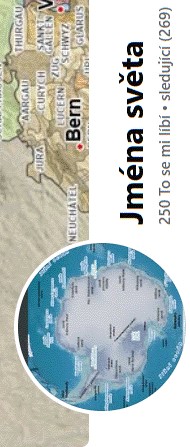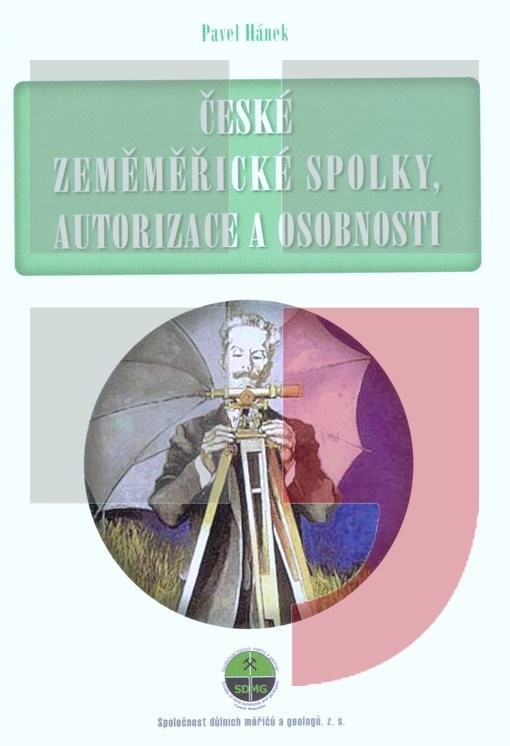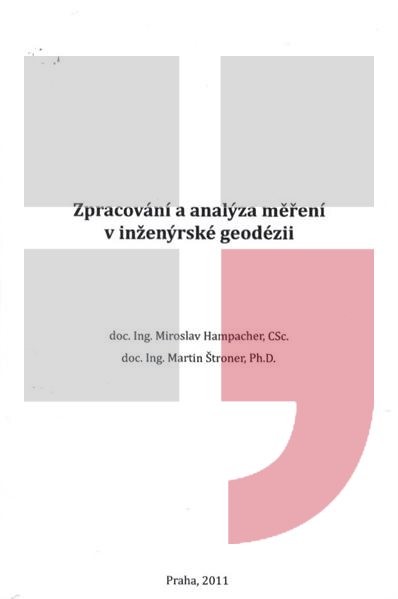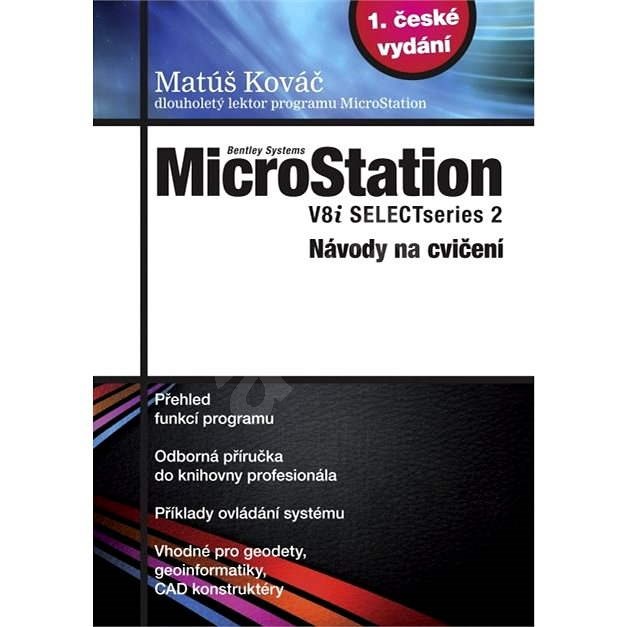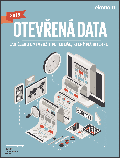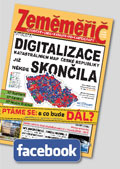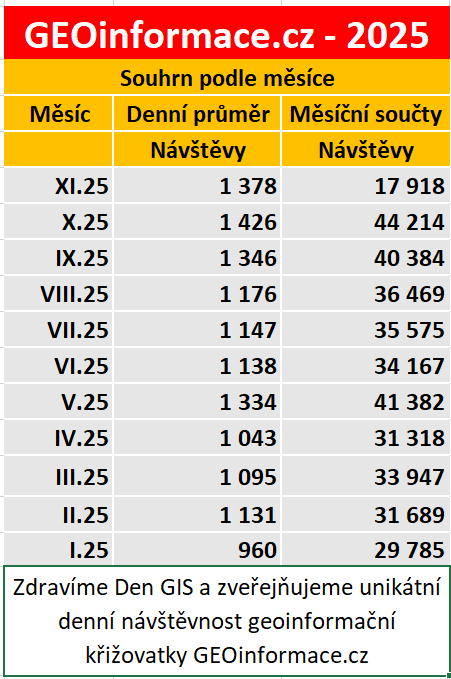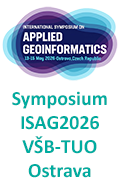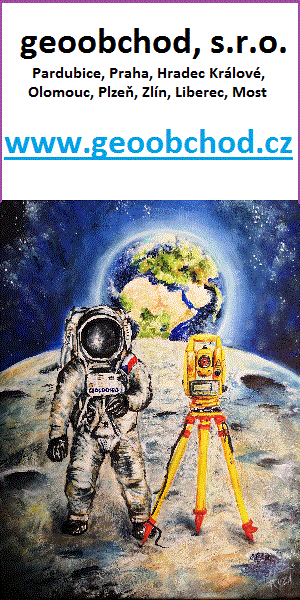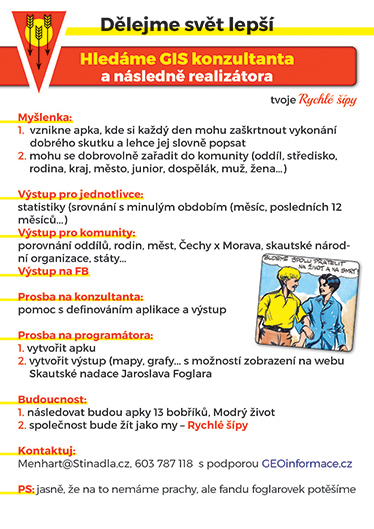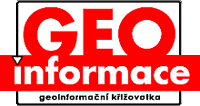zprávy
zdroje zpráv:2023_Nové číslo GaKO
15.7.2019 11:14 Zeměměřický úřad Zeměměřický úřad zveřejnil novou aktualitu:Aktuální číslo Geodetického a kartografického obzoru (3/2023)
20210816-Nové číslo GaKO
15.7.2019 11:14 ČÚZK /Urady/Zememericky-urad/O-uradu/Aktuality/20190715-Nove-cislo-GaKO20220118-Nové číslo GaKO
15.7.2019 11:14 ČÚZK - předpisy a opatření Zeměměřický úřad zveřejnil novou aktualitu:Aktuální číslo Geodetického a kartografického obzoru (01/2022)
2025 Nové číslo GaKO
15.7.2019 11:14 ČÚZK - předpisy a opatření Zeměměřický úřad zveřejnil novou aktualitu:Aktuální číslo Geodetického a kartografického obzoru (2/2025)
je k dispozici ke stažení.
20200316-Nové číslo GaKO
15.7.2019 11:14 ČÚZK - předpisy a opatření Zeměměřický úřad zveřejnil novou aktualitu:Aktuální číslo Geodetického a kartografického obzoru (03/2020)
2025 Nové číslo GaKO
15.7.2019 11:14 Zeměměřický úřad Zeměměřický úřad zveřejnil novou aktualitu: Aktuální číslo Geodetického a kartografického obzoru (10/2025)je k dispozici ke stažení.
2022_Nové číslo GaKO
15.7.2019 11:14 ČÚZK /Urady/Zememericky-urad/O-uradu/Aktuality/20190715-Nove-cislo-GaKO2023 Nové číslo GaKO
15.7.2019 11:14 ČÚZK - předpisy a opatření Zeměměřický úřad zveřejnil novou aktualitu:Aktuální číslo Geodetického a kartografického obzoru (11/2023)
je k dispozici ke stažení.
2025 Nové číslo GaKO
15.7.2019 11:14 Zeměměřický úřad Zeměměřický úřad zveřejnil novou aktualitu:Aktuální číslo Geodetického a kartografického obzoru (1/2024)
je k dispozici ke stažení.
20210816-Nové číslo GaKO
15.7.2019 11:14 Zeměměřický úřad Zeměměřický úřad zveřejnil novou aktualitu:Aktuální číslo Geodetického a kartografického obzoru (08/2021)
20210521-Nové číslo GaKO
15.7.2019 11:14 ČÚZK /Urady/Zememericky-urad/O-uradu/Aktuality/20190715-Nove-cislo-GaKO2023_Nové číslo GaKO
15.7.2019 11:14 Zeměměřický úřad Zeměměřický úřad zveřejnil novou aktualitu:Aktuální číslo Geodetického a kartografického obzoru (1/2023)
20210615-Nové číslo GaKO
15.7.2019 11:14 Zeměměřický úřad Zeměměřický úřad zveřejnil novou aktualitu:Aktuální číslo Geodetického a kartografického obzoru (06/2021)
2024 Nové číslo GaKO
15.7.2019 11:14 Zeměměřický úřad Zeměměřický úřad zveřejnil novou aktualitu:Aktuální číslo Geodetického a kartografického obzoru (7/2024)
je k dispozici ke stažení.
2022_Nové číslo GaKO
15.7.2019 11:14 ČÚZK - předpisy a opatření Zeměměřický úřad zveřejnil novou aktualitu:Aktuální číslo Geodetického a kartografického obzoru (09/2022)
20201016-Nové číslo GaKO
15.7.2019 11:14 ČÚZK - předpisy a opatření Zeměměřický úřad zveřejnil novou aktualitu:Aktuální číslo Geodetického a kartografického obzoru (10/2020)
20200817-Nové číslo GaKO
15.7.2019 11:14 ČÚZK /Urady/Zememericky-urad/O-uradu/Aktuality/20190715-Nove-cislo-GaKO2025 Nové číslo GaKO
15.7.2019 11:14 Zeměměřický úřad Zeměměřický úřad zveřejnil novou aktualitu:Aktuální číslo Geodetického a kartografického obzoru (7/2025)
je k dispozici ke stažení.
20200817-Nové číslo GaKO
15.7.2019 11:14 ČÚZK - předpisy a opatření Zeměměřický úřad zveřejnil novou aktualitu:Aktuální číslo Geodetického a kartografického obzoru (08/2020)
2023_Nové číslo GaKO
15.7.2019 11:14 Zeměměřický úřad Zeměměřický úřad zveřejnil novou aktualitu:Aktuální číslo Geodetického a kartografického obzoru (4/2023)
20200612-Nové číslo GaKO
15.7.2019 11:14 ČÚZK /Urady/Zememericky-urad/O-uradu/Aktuality/20190715-Nove-cislo-GaKO20210419-Nové číslo GaKO
15.7.2019 11:14 ČÚZK /Urady/Zememericky-urad/O-uradu/Aktuality/20190715-Nove-cislo-GaKO20211014-Nové číslo GaKO
15.7.2019 11:14 ČÚZK - předpisy a opatření Zeměměřický úřad zveřejnil novou aktualitu:Aktuální číslo Geodetického a kartografického obzoru (10/2021)
2022_Nové číslo GaKO
15.7.2019 11:14 ČÚZK - předpisy a opatření Zeměměřický úřad zveřejnil novou aktualitu:Aktuální číslo Geodetického a kartografického obzoru (10/2022)
2023 Nové číslo GaKO
15.7.2019 11:14 Zeměměřický úřad Zeměměřický úřad zveřejnil novou aktualitu:Aktuální číslo Geodetického a kartografického obzoru (6/2023)
20211014-Nové číslo GaKO
15.7.2019 11:14 ČÚZK /Urady/Zememericky-urad/O-uradu/Aktuality/20190715-Nove-cislo-GaKO2023 Nové číslo GaKO
15.7.2019 11:14 Zeměměřický úřad Zeměměřický úřad zveřejnil novou aktualitu:Aktuální číslo Geodetického a kartografického obzoru (9/2023)
je k dispozici ke stažení.
20211213-Nové číslo GaKO
15.7.2019 11:14 ČÚZK /Urady/Zememericky-urad/O-uradu/Aktuality/20190715-Nove-cislo-GaKO2025 Nové číslo GaKO
15.7.2019 11:14 ČÚZK - předpisy a opatření Zeměměřický úřad zveřejnil novou aktualitu:Aktuální číslo Geodetického a kartografického obzoru (7/2025)
je k dispozici ke stažení.
20190916-Nové číslo GaKO
15.7.2019 11:14 ČÚZK /Urady/Zememericky-urad/O-uradu/Aktuality/20190715-Nove-cislo-GaKO20190916-Nové číslo GaKO
15.7.2019 11:14 ČÚZK - předpisy a opatření Zeměměřický úřad zveřejnil novou aktualitu:Aktuální číslo Geodetického a kartografického obzoru (9/2019)
2022_Nové číslo GaKO
15.7.2019 11:14 Zeměměřický úřad Zeměměřický úřad zveřejnil novou aktualitu:Aktuální číslo Geodetického a kartografického obzoru (07/2022)
20201118-Nové číslo GaKO
15.7.2019 11:14 Zeměměřický úřad Zeměměřický úřad zveřejnil novou aktualitu:Aktuální číslo Geodetického a kartografického obzoru (11/2020)
2024 Nové číslo GaKO
15.7.2019 11:14 ČÚZK - předpisy a opatření Zeměměřický úřad zveřejnil novou aktualitu:Aktuální číslo Geodetického a kartografického obzoru (10/2024)
je k dispozici ke stažení.
2024 Nové číslo GaKO
15.7.2019 11:14 ČÚZK - předpisy a opatření Zeměměřický úřad zveřejnil novou aktualitu:Aktuální číslo Geodetického a kartografického obzoru (10/2024)
je k dispozici ke stažení.
20210317-Nové číslo GaKO
15.7.2019 11:14 Zeměměřický úřad Zeměměřický úřad zveřejnil novou aktualitu:Aktuální číslo Geodetického a kartografického obzoru (03/2021)
20210521-Nové číslo GaKO
15.7.2019 11:14 Zeměměřický úřad Zeměměřický úřad zveřejnil novou aktualitu:Aktuální číslo Geodetického a kartografického obzoru (05/2021)
20191016-Nové číslo GaKO
15.7.2019 11:14 ČÚZK /Urady/Zememericky-urad/O-uradu/Aktuality/20190715-Nove-cislo-GaKO2023_Nové číslo GaKO
15.7.2019 11:14 ČÚZK - předpisy a opatření Zeměměřický úřad zveřejnil novou aktualitu:Aktuální číslo Geodetického a kartografického obzoru (1/2023)
2023_Nové číslo GaKO
15.7.2019 11:14 ČÚZK /Urady/Zememericky-urad/O-uradu/Aktuality/20190715-Nove-cislo-GaKO20220118-Nové číslo GaKO
15.7.2019 11:14 ČÚZK /Urady/Zememericky-urad/O-uradu/Aktuality/20190715-Nove-cislo-GaKO20200911-Nové číslo GaKO
15.7.2019 11:14 ČÚZK /Urady/Zememericky-urad/O-uradu/Aktuality/20190715-Nove-cislo-GaKO2024 Nové číslo GaKO
15.7.2019 11:14 ČÚZK - předpisy a opatření Zeměměřický úřad zveřejnil novou aktualitu:Aktuální číslo Geodetického a kartografického obzoru (2/2024)
je k dispozici ke stažení.
2024 Nové číslo GaKO
15.7.2019 11:14 ČÚZK - předpisy a opatření Zeměměřický úřad zveřejnil novou aktualitu:Aktuální číslo Geodetického a kartografického obzoru (6/2024)
je k dispozici ke stažení.
20200420-Nové číslo GaKO
15.7.2019 11:14 ČÚZK /Urady/Zememericky-urad/O-uradu/Aktuality/20190715-Nove-cislo-GaKO20211115-Nové číslo GaKO
15.7.2019 11:14 ČÚZK - předpisy a opatření Zeměměřický úřad zveřejnil novou aktualitu:Aktuální číslo Geodetického a kartografického obzoru (11/2021)
20191111-Nové číslo GaKO
15.7.2019 11:14 ČÚZK - předpisy a opatření Zeměměřický úřad zveřejnil novou aktualitu:Aktuální číslo Geodetického a kartografického obzoru (11/2019)
20191111-Nové číslo GaKO
15.7.2019 11:14 ČÚZK /Urady/Zememericky-urad/O-uradu/Aktuality/20190715-Nove-cislo-GaKO2025 Nové číslo GaKO
15.7.2019 11:14 ČÚZK - předpisy a opatření Zeměměřický úřad zveřejnil novou aktualitu: Aktuální číslo Geodetického a kartografického obzoru (11/2025)je k dispozici ke stažení.
2022_Nové číslo GaKO
15.7.2019 11:14 Zeměměřický úřad Zeměměřický úřad zveřejnil novou aktualitu:Aktuální číslo Geodetického a kartografického obzoru (04/2022)
2023 Nové číslo GaKO
15.7.2019 11:14 ČÚZK /Urady/Zememericky-urad/O-uradu/Aktuality/20190715-Nove-cislo-GaKO2022_Nové číslo GaKO
15.7.2019 11:14 Zeměměřický úřad Zeměměřický úřad zveřejnil novou aktualitu:Aktuální číslo Geodetického a kartografického obzoru (06/2022)
2023_Nové číslo GaKO
15.7.2019 11:14 ČÚZK - předpisy a opatření Zeměměřický úřad zveřejnil novou aktualitu:Aktuální číslo Geodetického a kartografického obzoru (4/2023)
2022_Nové číslo GaKO
15.7.2019 11:14 Zeměměřický úřad Zeměměřický úřad zveřejnil novou aktualitu:Aktuální číslo Geodetického a kartografického obzoru (10/2022)
20210615-Nové číslo GaKO
15.7.2019 11:14 ČÚZK /Urady/Zememericky-urad/O-uradu/Aktuality/20190715-Nove-cislo-GaKO20191206-Nové číslo GaKO
15.7.2019 11:14 ČÚZK /Urady/Zememericky-urad/O-uradu/Aktuality/20190715-Nove-cislo-GaKO2023 Nové číslo GaKO
15.7.2019 11:14 Zeměměřický úřad Zeměměřický úřad zveřejnil novou aktualitu:Aktuální číslo Geodetického a kartografického obzoru (10/2023)
je k dispozici ke stažení.
2022_Nové číslo GaKO
15.7.2019 11:14 Zeměměřický úřad Zeměměřický úřad zveřejnil novou aktualitu:Aktuální číslo Geodetického a kartografického obzoru (02/2022)
20210317-Nové číslo GaKO
15.7.2019 11:14 ČÚZK - předpisy a opatření Zeměměřický úřad zveřejnil novou aktualitu:Aktuální číslo Geodetického a kartografického obzoru (03/2021)
2022_Nové číslo GaKO
15.7.2019 11:14 ČÚZK - předpisy a opatření Zeměměřický úřad zveřejnil novou aktualitu:Aktuální číslo Geodetického a kartografického obzoru (08/2022)
2023_Nové číslo GaKO
15.7.2019 11:14 Zeměměřický úřad Zeměměřický úřad zveřejnil novou aktualitu:Aktuální číslo Geodetického a kartografického obzoru (2/2023)
2025 Nové číslo GaKO
15.7.2019 11:14 Zeměměřický úřad Zeměměřický úřad zveřejnil novou aktualitu: Aktuální číslo Geodetického a kartografického obzoru (8/2025)je k dispozici ke stažení.
2022_Nové číslo GaKO
15.7.2019 11:14 ČÚZK - předpisy a opatření Zeměměřický úřad zveřejnil novou aktualitu:Aktuální číslo Geodetického a kartografického obzoru (07/2022)
2025 Nové číslo GaKO
15.7.2019 11:14 ČÚZK - předpisy a opatření Zeměměřický úřad zveřejnil novou aktualitu:Aktuální číslo Geodetického a kartografického obzoru (1/2025)
je k dispozici ke stažení.
20200116-Nové číslo GaKO
15.7.2019 11:14 ČÚZK - předpisy a opatření Zeměměřický úřad zveřejnil novou aktualitu:Aktuální číslo Geodetického a kartografického obzoru (01/2020)
2024 Nové číslo GaKO
15.7.2019 11:14 ČÚZK - předpisy a opatření Zeměměřický úřad zveřejnil novou aktualitu:Aktuální číslo Geodetického a kartografického obzoru (7-8/2024)
je k dispozici ke stažení.
2023_Nové číslo GaKO
15.7.2019 11:14 Zeměměřický úřad Zeměměřický úřad zveřejnil novou aktualitu:Aktuální číslo Geodetického a kartografického obzoru (5/2023)
2024 Nové číslo GaKO
15.7.2019 11:14 Zeměměřický úřad Zeměměřický úřad zveřejnil novou aktualitu:Aktuální číslo Geodetického a kartografického obzoru (7-8/2024)
je k dispozici ke stažení.
2025 Nové číslo GaKO
15.7.2019 11:14 ČÚZK - předpisy a opatření Zeměměřický úřad zveřejnil novou aktualitu:Aktuální číslo Geodetického a kartografického obzoru (1/2024)
je k dispozici ke stažení.
2025 Nové číslo GaKO
15.7.2019 11:14 Zeměměřický úřad Zeměměřický úřad zveřejnil novou aktualitu:Aktuální číslo Geodetického a kartografického obzoru (4/2025)
je k dispozici ke stažení.
20200612-Nové číslo GaKO
15.7.2019 11:14 Zeměměřický úřad Zeměměřický úřad zveřejnil novou aktualitu:Aktuální číslo Geodetického a kartografického obzoru (06/2020)
20200217-Nové číslo GaKO
15.7.2019 11:14 Zeměměřický úřad Zeměměřický úřad zveřejnil novou aktualitu:Aktuální číslo Geodetického a kartografického obzoru (02/2020)
20210118-Nové číslo GaKO
15.7.2019 11:14 Zeměměřický úřad Zeměměřický úřad zveřejnil novou aktualitu:Aktuální číslo Geodetického a kartografického obzoru (01/2021)
20210211-Nové číslo GaKO
15.7.2019 11:14 Zeměměřický úřad Zeměměřický úřad zveřejnil novou aktualitu:Aktuální číslo Geodetického a kartografického obzoru (02/2021)
20211115-Nové číslo GaKO
15.7.2019 11:14 ČÚZK /Urady/Zememericky-urad/O-uradu/Aktuality/20190715-Nove-cislo-GaKO2025 Nové číslo GaKO
15.7.2019 11:14 ČÚZK - předpisy a opatření Zeměměřický úřad zveřejnil novou aktualitu: Aktuální číslo Geodetického a kartografického obzoru (8/2025)je k dispozici ke stažení.
20210714-Nové číslo GaKO
15.7.2019 11:14 ČÚZK - předpisy a opatření Zeměměřický úřad zveřejnil novou aktualitu:Aktuální číslo Geodetického a kartografického obzoru (07/2021)
20200316-Nové číslo GaKO
15.7.2019 11:14 ČÚZK /Urady/Zememericky-urad/O-uradu/Aktuality/20190715-Nove-cislo-GaKO20210419-Nové číslo GaKO
15.7.2019 11:14 ČÚZK - předpisy a opatření Zeměměřický úřad zveřejnil novou aktualitu:Aktuální číslo Geodetického a kartografického obzoru (04/2021)
20200316-Nové číslo GaKO
15.7.2019 11:14 Zeměměřický úřad Zeměměřický úřad zveřejnil novou aktualitu:Aktuální číslo Geodetického a kartografického obzoru (03/2020)
2024 Nové číslo GaKO
15.7.2019 11:14 Zeměměřický úřad Zeměměřický úřad zveřejnil novou aktualitu:Aktuální číslo Geodetického a kartografického obzoru (2/2024)
je k dispozici ke stažení.
20201118-Nové číslo GaKO
15.7.2019 11:14 ČÚZK - předpisy a opatření Zeměměřický úřad zveřejnil novou aktualitu:Aktuální číslo Geodetického a kartografického obzoru (11/2020)
20210211-Nové číslo GaKO
15.7.2019 11:14 ČÚZK /Urady/Zememericky-urad/O-uradu/Aktuality/20190715-Nove-cislo-GaKO20200715-Nové číslo GaKO
15.7.2019 11:14 ČÚZK /Urady/Zememericky-urad/O-uradu/Aktuality/20190715-Nove-cislo-GaKO2023_Nové číslo GaKO
15.7.2019 11:14 ČÚZK - předpisy a opatření Zeměměřický úřad zveřejnil novou aktualitu:Aktuální číslo Geodetického a kartografického obzoru (5/2023)
20191016-Nové číslo GaKO
15.7.2019 11:14 Zeměměřický úřad Zeměměřický úřad zveřejnil novou aktualitu:Aktuální číslo Geodetického a kartografického obzoru (10/2019)
20210915-Nové číslo GaKO
15.7.2019 11:14 Zeměměřický úřad Zeměměřický úřad zveřejnil novou aktualitu:Aktuální číslo Geodetického a kartografického obzoru (09/2021)
20200116-Nové číslo GaKO
15.7.2019 11:14 Zeměměřický úřad Zeměměřický úřad zveřejnil novou aktualitu:Aktuální číslo Geodetického a kartografického obzoru (01/2020)
2024 Nové číslo GaKO
15.7.2019 11:14 Zeměměřický úřad Zeměměřický úřad zveřejnil novou aktualitu:Aktuální číslo Geodetického a kartografického obzoru (10/2024)
je k dispozici ke stažení.
2024 Nové číslo GaKO
15.7.2019 11:14 Zeměměřický úřad Zeměměřický úřad zveřejnil novou aktualitu:Aktuální číslo Geodetického a kartografického obzoru (5/2024)
je k dispozici ke stažení.
2024 Nové číslo GaKO
15.7.2019 11:14 Zeměměřický úřad Zeměměřický úřad zveřejnil novou aktualitu:Aktuální číslo Geodetického a kartografického obzoru (1/2024)
je k dispozici ke stažení.
20200518-Nové číslo GaKO
15.7.2019 11:14 ČÚZK /Urady/Zememericky-urad/O-uradu/Aktuality/20190715-Nove-cislo-GaKO20191206-Nové číslo GaKO
15.7.2019 11:14 Zeměměřický úřad Zeměměřický úřad zveřejnil novou aktualitu:Aktuální číslo Geodetického a kartografického obzoru (12/2019)
2022_Nové číslo GaKO
15.7.2019 11:14 ČÚZK - předpisy a opatření Zeměměřický úřad zveřejnil novou aktualitu:Aktuální číslo Geodetického a kartografického obzoru (03/2022)
20210419-Nové číslo GaKO
15.7.2019 11:14 Zeměměřický úřad Zeměměřický úřad zveřejnil novou aktualitu:Aktuální číslo Geodetického a kartografického obzoru (04/2021)
20200911-Nové číslo GaKO
15.7.2019 11:14 ČÚZK - předpisy a opatření Zeměměřický úřad zveřejnil novou aktualitu:Aktuální číslo Geodetického a kartografického obzoru (09/2020)
20210211-Nové číslo GaKO
15.7.2019 11:14 ČÚZK - předpisy a opatření Zeměměřický úřad zveřejnil novou aktualitu:Aktuální číslo Geodetického a kartografického obzoru (02/2021)
2024 Nové číslo GaKO
15.7.2019 11:14 ČÚZK - předpisy a opatření Zeměměřický úřad zveřejnil novou aktualitu:Aktuální číslo Geodetického a kartografického obzoru (1/2024)
je k dispozici ke stažení.
2024 Nové číslo GaKO
15.7.2019 11:14 ČÚZK - předpisy a opatření Zeměměřický úřad zveřejnil novou aktualitu:Aktuální číslo Geodetického a kartografického obzoru (11/2024)
je k dispozici ke stažení.
2024 Nové číslo GaKO
15.7.2019 11:14 Zeměměřický úřad Zeměměřický úřad zveřejnil novou aktualitu:Aktuální číslo Geodetického a kartografického obzoru (4/2024)
je k dispozici ke stažení.
20210118-Nové číslo GaKO
15.7.2019 11:14 ČÚZK /Urady/Zememericky-urad/O-uradu/Aktuality/20190715-Nove-cislo-GaKO2022_Nové číslo GaKO
15.7.2019 11:14 Zeměměřický úřad Zeměměřický úřad zveřejnil novou aktualitu:Aktuální číslo Geodetického a kartografického obzoru (03/2022)
2022_Nové číslo GaKO
15.7.2019 11:14 ČÚZK - předpisy a opatření Zeměměřický úřad zveřejnil novou aktualitu:Aktuální číslo Geodetického a kartografického obzoru (06/2022)
2022_Nové číslo GaKO
15.7.2019 11:14 Zeměměřický úřad Zeměměřický úřad zveřejnil novou aktualitu:Aktuální číslo Geodetického a kartografického obzoru (05/2022)
20201016-Nové číslo GaKO
15.7.2019 11:14 ČÚZK /Urady/Zememericky-urad/O-uradu/Aktuality/20190715-Nove-cislo-GaKO20190809-Nové číslo GaKO
15.7.2019 11:14 ČÚZK /Urady/Zememericky-urad/O-uradu/Aktuality/20190715-Nove-cislo-GaKO2024 Nové číslo GaKO
15.7.2019 11:14 ČÚZK - předpisy a opatření Zeměměřický úřad zveřejnil novou aktualitu:Aktuální číslo Geodetického a kartografického obzoru (3/2024)
je k dispozici ke stažení.
2024 Nové číslo GaKO
15.7.2019 11:14 Zeměměřický úřad Zeměměřický úřad zveřejnil novou aktualitu:Aktuální číslo Geodetického a kartografického obzoru (11/2024)
je k dispozici ke stažení.
2023 Nové číslo GaKO
15.7.2019 11:14 Zeměměřický úřad Zeměměřický úřad zveřejnil novou aktualitu:Aktuální číslo Geodetického a kartografického obzoru (8/2023)
je k dispozici ke stažení.
2022_Nové číslo GaKO
15.7.2019 11:14 Zeměměřický úřad Zeměměřický úřad zveřejnil novou aktualitu:Aktuální číslo Geodetického a kartografického obzoru (09/2022)
20210816-Nové číslo GaKO
15.7.2019 11:14 ČÚZK - předpisy a opatření Zeměměřický úřad zveřejnil novou aktualitu:Aktuální číslo Geodetického a kartografického obzoru (08/2021)
2023 Nové číslo GaKO
15.7.2019 11:14 ČÚZK - předpisy a opatření Zeměměřický úřad zveřejnil novou aktualitu:Aktuální číslo Geodetického a kartografického obzoru (9/2023)
je k dispozici ke stažení.
20190809-Nové číslo GaKO
15.7.2019 11:14 ČÚZK - předpisy a opatření Zeměměřický úřad zveřejnil novou aktualitu:Aktuální číslo Geodetického a kartografického obzoru (8/2019)
2022_Nové číslo GaKO
15.7.2019 11:14 ČÚZK - předpisy a opatření Zeměměřický úřad zveřejnil novou aktualitu:Aktuální číslo Geodetického a kartografického obzoru (12/2022)
20191206-Nové číslo GaKO
15.7.2019 11:14 ČÚZK - předpisy a opatření Zeměměřický úřad zveřejnil novou aktualitu:Aktuální číslo Geodetického a kartografického obzoru (12/2019)
20210714-Nové číslo GaKO
15.7.2019 11:14 ČÚZK /Urady/Zememericky-urad/O-uradu/Aktuality/20190715-Nove-cislo-GaKO2023 Nové číslo GaKO
15.7.2019 11:14 ČÚZK - předpisy a opatření Zeměměřický úřad zveřejnil novou aktualitu:Aktuální číslo Geodetického a kartografického obzoru (6/2023)
2024 Nové číslo GaKO
15.7.2019 11:14 Zeměměřický úřad Zeměměřický úřad zveřejnil novou aktualitu:Aktuální číslo Geodetického a kartografického obzoru (3/2024)
je k dispozici ke stažení.
20210615-Nové číslo GaKO
15.7.2019 11:14 ČÚZK - předpisy a opatření Zeměměřický úřad zveřejnil novou aktualitu:Aktuální číslo Geodetického a kartografického obzoru (06/2021)
2023 Nové číslo GaKO
15.7.2019 11:14 Zeměměřický úřad Zeměměřický úřad zveřejnil novou aktualitu:Aktuální číslo Geodetického a kartografického obzoru (5/2023)



